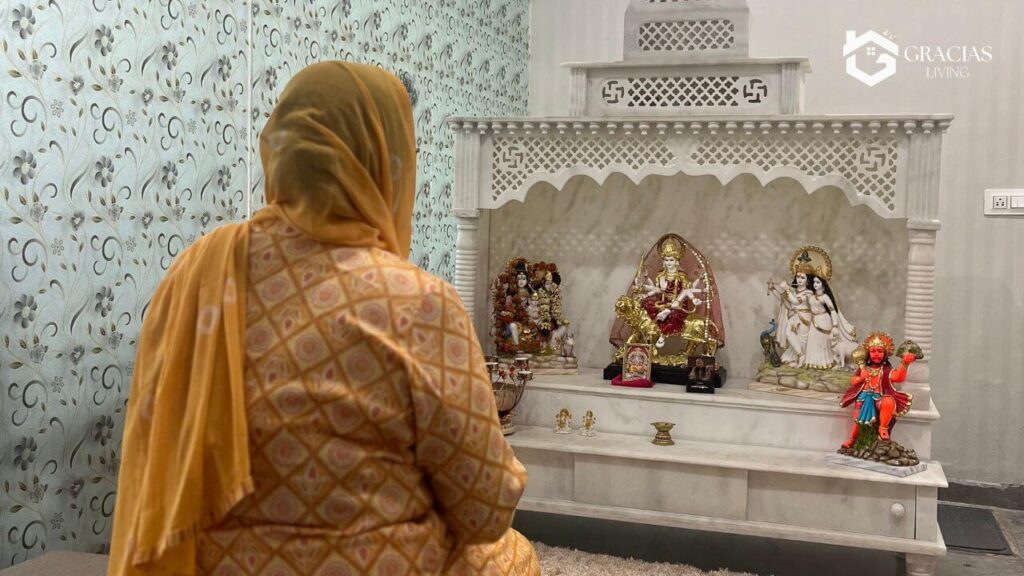Quick Summary of the article:
- Senior living facilities offer a supportive and independent environment, old age homes, also known as nursing homes cater to seniors who require extensive care due to advanced age or chronic health conditions.
- It offers a range of amenities, social activities, and recreational programs.
- Senior Living, Old age homes whatever we call them, It’s a different experience for different senior individuals.
- The decision to transition aging parents to Senior Living or old age homes is often met with a mix of emotions, ranging from guilt and apprehension to relief and practicality.
Senior Living, in elder care, the question arises to choose between assisted living places and old age homes for their senior loved ones.

Senior Living vs. Old Age Homes: Distinguishing Features
Understanding the distinguishing features of senior Living and Old Age homes, these choices can help us make better-informed decisions.
Let’s talk about what each place offers and why it’s important for families to know about them. Deciding between Senior living and old age homes can be confusing for families but we can make informed decisions by knowing the facts and facilities available at both places.
- Senior living facilities offer a supportive yet independent living environment, where residents receive assistance with daily tasks while maintaining autonomy over their lives. These facilities typically feature private or semi-private apartments or rooms, allowing residents to personalize their living space while accessing communal amenities and services.
- On the other hand, old age homes, also known as nursing homes or long-term care facilities, cater to seniors who require extensive care and supervision due to advanced age, chronic health conditions, or disabilities. These facilities provide round-the-clock medical care, assistance with activities of daily living, and specialized services to meet the complex needs of their residents.
The Delicate Decision: Should Parents Be Sent to Senior Living or Old Age Homes
The decision to transition aging parents to Senior Living or old age homes is often met with a mix of emotions, ranging from guilt and apprehension to relief and practicality.
Families must consider various factors, including the level of care needed, the availability of family support, financial resources, and the quality of available facilities.
While some families may feel compelled to keep their loved ones at home for as long as possible, others recognize the benefits of professional daycare and support provided by Senior Living or old age homes, particularly when faced with the challenges of managing complex medical conditions or providing around-the-clock supervision.

Why Parents Are Sent to Senior Living or Old Age Homes
The decision to move aging parents to Senior Living or old age homes is often driven by a combination of factors, including:
- Limited family support: In cases where family members are unable to provide adequate care due to geographic distance, work commitments, or personal limitations, Senior Living or old age homes offer a viable alternative for ensuring that seniors receive the support they need.
- Medical and safety concerns: Seniors with chronic health conditions, mobility issues, or cognitive impairments may require specialized care and supervision that is beyond the capacity of family caregivers to provide at home.
Senior Living or Old age homes are equipped to address these needs and ensure the safety and well-being of residents.
- Quality of life considerations: Senior Living and Old age homes offer a range of amenities, social activities, and recreational programs designed to enhance residents’ quality of life and promote social engagement and mental stimulation. For seniors who may be isolated or lonely at home, the sense of community and camaraderie found in Senior Living and old age homes can be invaluable.
What happens inside Old Age Homes and Senior Living: A Glimpse into Daily Life
Old age homes and Senior Living strive to create a supportive and nurturing environment where seniors can enjoy and live happily and hassle free, and maintain a sense of dignity and independence. These senior living and old age homes typically offer a wide range of services and amenities, including:
- Personal care assistance: Trained caregivers and nursing staff provide assistance with activities of daily living, such as bathing, dressing, grooming, and medication management.
- Medical services: Senior living and Old age homes often have on-site medical staff, including nurses, physicians, and therapists, who can address seniors’ healthcare needs and coordinate specialized care as required.
- Social and recreational activities: To combat social isolation and promote mental and emotional well-being, senior living and old age homes organize a variety of social activities, group outings, and recreational programs tailored to residents’ interests and abilities.
- Nutritious meals: Seniors are provided with balanced and nutritious meals prepared by chefs or dietary staff, accommodating special dietary needs and preferences of seniors hence they feel valued and motivated.
- Safety and security: Senior Living and Old age homes prioritize the safety and security of their residents, with features such as secure entryways, emergency call systems, and 24/7 staff supervision to respond to any emergencies or concerns.
Are Old Age Homes or Senior Living a Viable Option
Despite lingering stereotypes and misconceptions, Senior Living and old age homes can be a viable and beneficial option for seniors in need of specialized care and support. Some key advantages of Senior Living include:
- Professional care and supervision: Senior Living and Old age homes employ trained caregivers, nurses, and medical staff who specialize in geriatric care and are equipped to address the unique needs and challenges of aging.
- Social engagement and community support: Senior Living and Old age homes provide opportunities for residents to connect with peers, participate in social activities, and build meaningful relationships, reducing feelings of loneliness and isolation.
- Access to amenities and services: Senior Living and Old age homes offer a range of amenities and services designed to enhance residents’ quality of life, including recreational facilities, therapeutic programs, and transportation services for outings and appointments.
- Peace of mind for families: By entrusting their loved ones to the care of professionals in a senior living, families can have peace of mind knowing that their seniors are receiving the support and supervision they need to maintain their health and well-being.
The Benefits of Choosing Senior Living or Old Age Homes
Senior Living and Old age homes offer numerous benefits that contribute to seniors’ overall quality of life and happiness. These include:
- Socialization: Residents have the opportunity to interact with peers, form friendships, and participate in group activities and outings.
- Personalized Care: Trained staff members provide individualized care and support, ensuring that seniors’ unique needs are met effectively.
- Safety and Security: Senior Living and Old age homes offer a secure environment with round-the-clock supervision, reducing the risk of accidents or emergencies.
- Access to Amenities: Residents enjoy access to amenities such as, libraries, gardens, and recreational facilities, enhancing their overall well-being and sense of fulfillment.
- Relief for Family Caregivers: Senior Living and Old age homes alleviate the burden on family caregivers, allowing them to focus on maintaining their own well-being and relationships while ensuring their loved ones receive the care they need.
Viewing Challenges through a Positive Lens: Disadvantages of Senior Living and Old Age Homes
While challenges exist within the old age home setting, many can be reframed as opportunities for personal growth, resilience, and adaptation. These may include:
- Adjusting to a New Environment: Moving to a senior living and old age home may require seniors to adapt to a new living environment, routines, and social dynamics. However, with time and support, residents often find a sense of belonging and familiarity within the community.
- Loss of Independence: Some seniors may perceive the transition to a senior living or old age home as a loss of independence. However, the supportive environment of these facilities empowers residents to maintain autonomy over their lives while receiving the necessary assistance and support.
- Emotional Impact: Separation from family members and familiar surroundings can evoke feelings of loneliness or sadness initially. Yet, Senior Living and old age homes provide opportunities for residents to connect with peers, engage in meaningful activities, and cultivate new relationships, mitigating feelings of isolation.
Finding Senior Community in Senior Living and Old Age Homes
- Senior Living and old age homes offer a welcoming and inclusive environment where seniors can embrace a new chapter in their lives with optimism and enthusiasm.
- These communities foster a sense of camaraderie and belonging, providing residents with opportunities to pursue hobbies, interests, and passions alongside like-minded individuals.
- Senior Living and old age homes often organize a diverse range of activities, events, and outings that cater to residents’ interests and preferences, promoting socialization, engagement, and mental stimulation
Conclusion
While choosing between senior living and old age homes, families should make conscious decisions prioritizing safety and well-being of our beloved seniors.
These Senior Livings in india provide a caring and empathetic environment where seniors receive personalized care and compassionate support.
Despite challenges, Senior Living enjoys a sense of community and belonging among fellow seniors.
Retirement homes, Senior Living, Old age homes whatever we call them and whatever we choose for our loved ones is the different journey fo r different individuals and Seniors.




